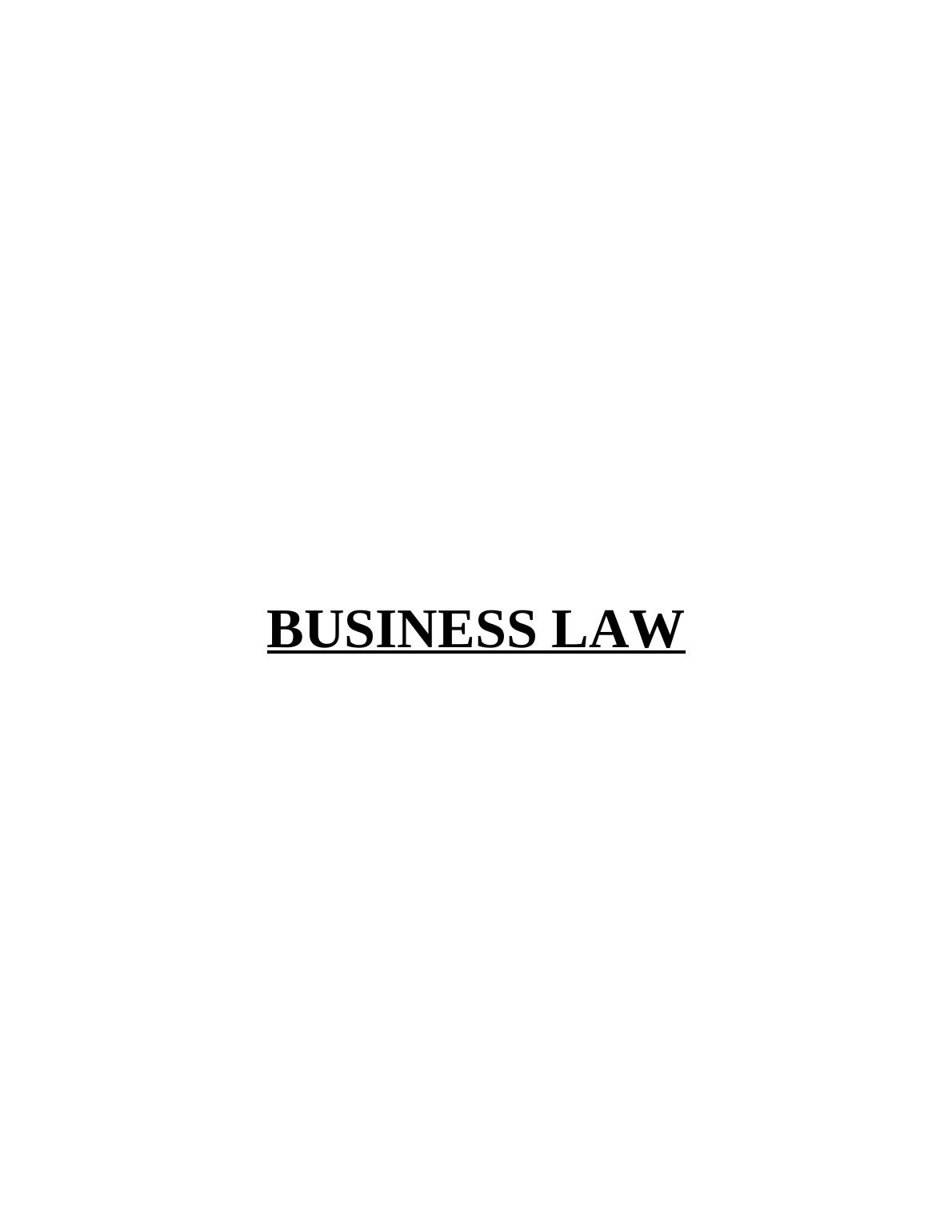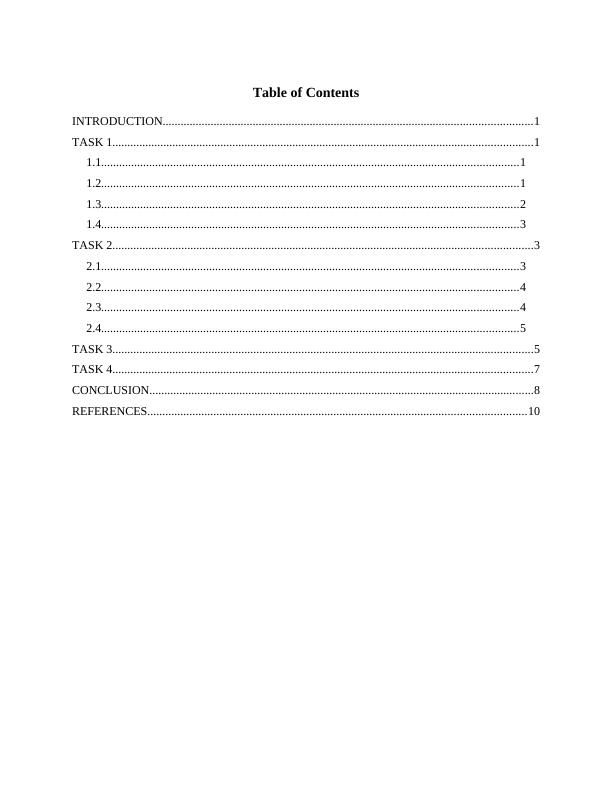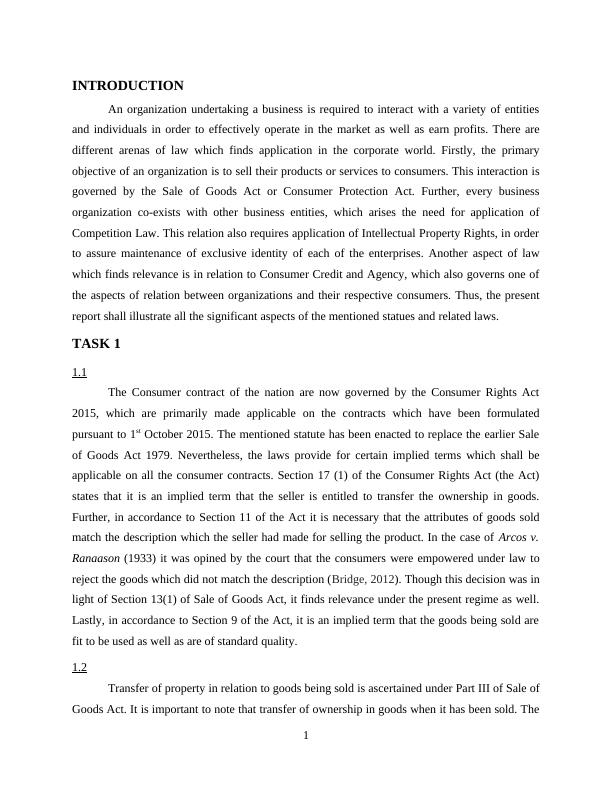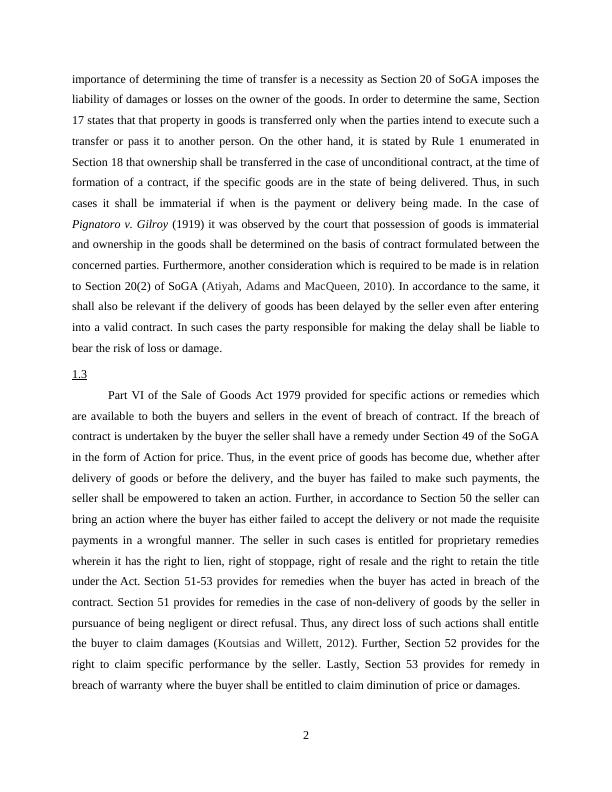Business Law in Organizations
Added on 2020-01-28
12 Pages3859 Words466 Views
BUSINESS LAW

Table of ContentsINTRODUCTION...........................................................................................................................1TASK 1............................................................................................................................................11.1...........................................................................................................................................11.2...........................................................................................................................................11.3...........................................................................................................................................21.4...........................................................................................................................................3TASK 2............................................................................................................................................32.1...........................................................................................................................................32.2...........................................................................................................................................42.3...........................................................................................................................................42.4...........................................................................................................................................5TASK 3............................................................................................................................................5TASK 4............................................................................................................................................7CONCLUSION................................................................................................................................8REFERENCES..............................................................................................................................10

INTRODUCTIONAn organization undertaking a business is required to interact with a variety of entitiesand individuals in order to effectively operate in the market as well as earn profits. There aredifferent arenas of law which finds application in the corporate world. Firstly, the primaryobjective of an organization is to sell their products or services to consumers. This interaction isgoverned by the Sale of Goods Act or Consumer Protection Act. Further, every businessorganization co-exists with other business entities, which arises the need for application ofCompetition Law. This relation also requires application of Intellectual Property Rights, in orderto assure maintenance of exclusive identity of each of the enterprises. Another aspect of lawwhich finds relevance is in relation to Consumer Credit and Agency, which also governs one ofthe aspects of relation between organizations and their respective consumers. Thus, the presentreport shall illustrate all the significant aspects of the mentioned statues and related laws.TASK 11.1The Consumer contract of the nation are now governed by the Consumer Rights Act2015, which are primarily made applicable on the contracts which have been formulatedpursuant to 1st October 2015. The mentioned statute has been enacted to replace the earlier Saleof Goods Act 1979. Nevertheless, the laws provide for certain implied terms which shall beapplicable on all the consumer contracts. Section 17 (1) of the Consumer Rights Act (the Act)states that it is an implied term that the seller is entitled to transfer the ownership in goods.Further, in accordance to Section 11 of the Act it is necessary that the attributes of goods soldmatch the description which the seller had made for selling the product. In the case of Arcos v.Ranaason (1933) it was opined by the court that the consumers were empowered under law toreject the goods which did not match the description (Bridge, 2012). Though this decision was inlight of Section 13(1) of Sale of Goods Act, it finds relevance under the present regime as well.Lastly, in accordance to Section 9 of the Act, it is an implied term that the goods being sold arefit to be used as well as are of standard quality.1.2Transfer of property in relation to goods being sold is ascertained under Part III of Sale ofGoods Act. It is important to note that transfer of ownership in goods when it has been sold. The1

importance of determining the time of transfer is a necessity as Section 20 of SoGA imposes theliability of damages or losses on the owner of the goods. In order to determine the same, Section17 states that that property in goods is transferred only when the parties intend to execute such atransfer or pass it to another person. On the other hand, it is stated by Rule 1 enumerated inSection 18 that ownership shall be transferred in the case of unconditional contract, at the time offormation of a contract, if the specific goods are in the state of being delivered. Thus, in suchcases it shall be immaterial if when is the payment or delivery being made. In the case ofPignatoro v. Gilroy (1919) it was observed by the court that possession of goods is immaterialand ownership in the goods shall be determined on the basis of contract formulated between theconcerned parties. Furthermore, another consideration which is required to be made is in relationto Section 20(2) of SoGA (Atiyah, Adams and MacQueen, 2010). In accordance to the same, itshall also be relevant if the delivery of goods has been delayed by the seller even after enteringinto a valid contract. In such cases the party responsible for making the delay shall be liable tobear the risk of loss or damage. 1.3Part VI of the Sale of Goods Act 1979 provided for specific actions or remedies whichare available to both the buyers and sellers in the event of breach of contract. If the breach ofcontract is undertaken by the buyer the seller shall have a remedy under Section 49 of the SoGAin the form of Action for price. Thus, in the event price of goods has become due, whether afterdelivery of goods or before the delivery, and the buyer has failed to make such payments, theseller shall be empowered to taken an action. Further, in accordance to Section 50 the seller canbring an action where the buyer has either failed to accept the delivery or not made the requisitepayments in a wrongful manner. The seller in such cases is entitled for proprietary remedieswherein it has the right to lien, right of stoppage, right of resale and the right to retain the titleunder the Act. Section 51-53 provides for remedies when the buyer has acted in breach of thecontract. Section 51 provides for remedies in the case of non-delivery of goods by the seller inpursuance of being negligent or direct refusal. Thus, any direct loss of such actions shall entitlethe buyer to claim damages (Koutsias and Willett, 2012). Further, Section 52 provides for theright to claim specific performance by the seller. Lastly, Section 53 provides for remedy inbreach of warranty where the buyer shall be entitled to claim diminution of price or damages. 2

End of preview
Want to access all the pages? Upload your documents or become a member.
Related Documents
UNIT 3 Business Law Assignmentlg...
|11
|3723
|216
Business Law Assignment - Sales of Goodslg...
|13
|4835
|230
[PDF] Business Law case studylg...
|9
|2532
|133
Question 1 - Sale of Goods A. The Sale of Goods Act 1908lg...
|13
|3270
|406
BUSINESS LAW INTRODUCTION 4 TASK 14lg...
|17
|4650
|198
Madison Development Corporationlg...
|10
|2079
|30
